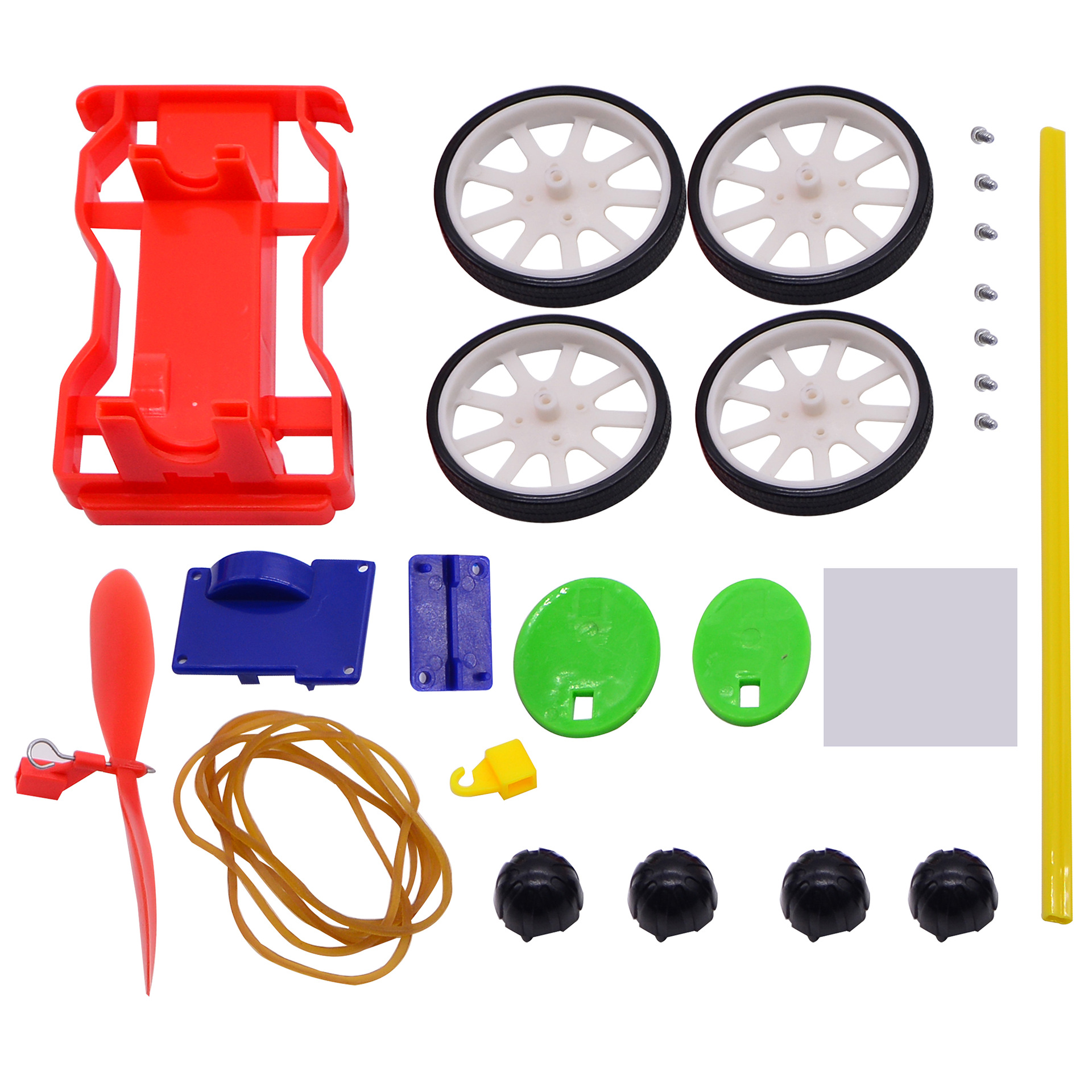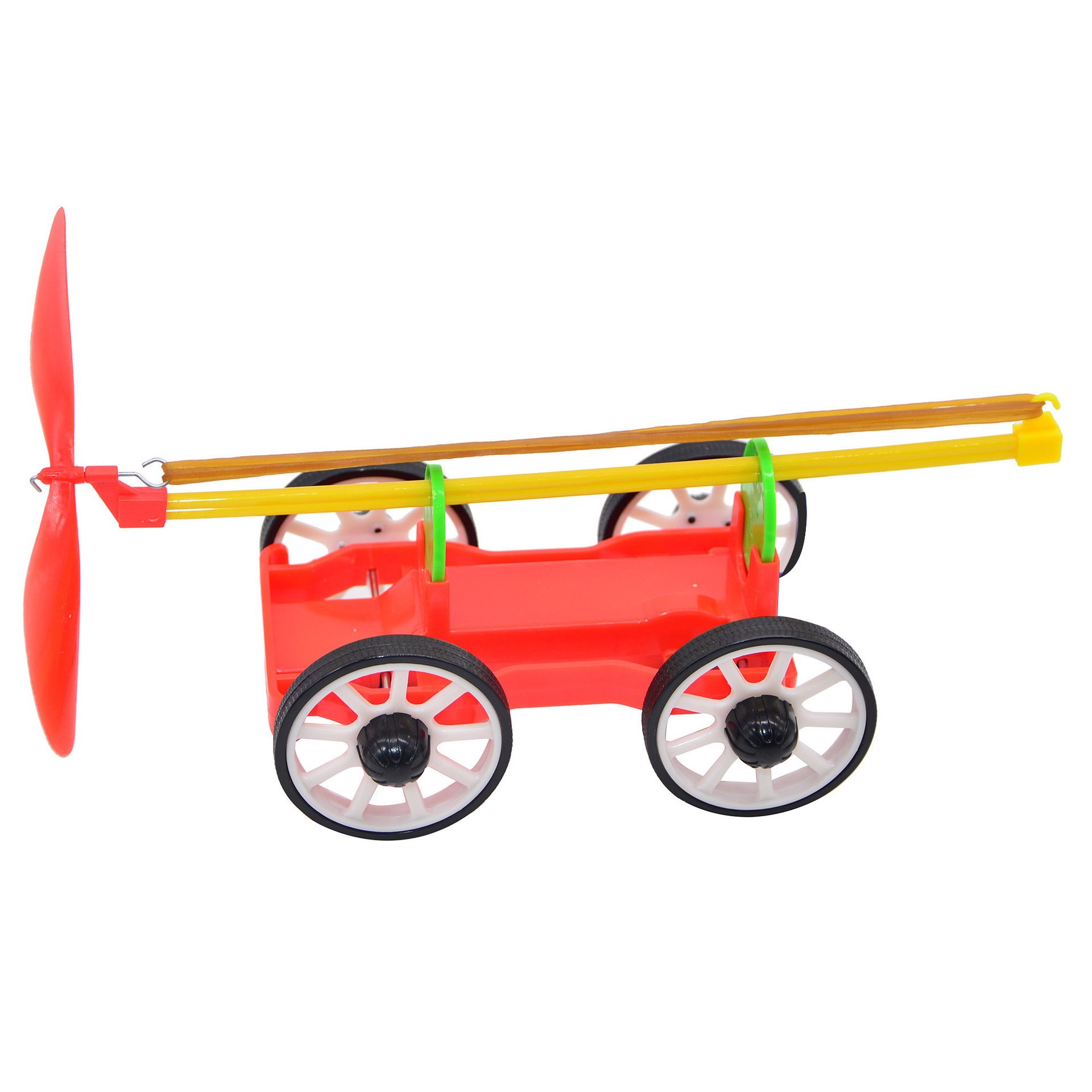
Search history
Clear allSearch by image
XDrag and drop an image here or upload an image
Max 5MB per image
UploadSign In | Join

Search history
Clear allSearch by image
XDrag and drop an image here or upload an image
Max 5MB per image
UploadSign In | Join
X Email Mobile
| Number | Unit-price | Total | |||
| I want to buy: | × | 7.5 | = | 0 |
A new item has been added to your Shopping Cart. You now have items in your Shopping Cart.
Product Name: Wind Power Experiment Car
Product code: C106 Wind Power Experiment Car
Size: 210*105*145mm
Weight: 100g
Material: Plastic parts + metal parts + rubber bands
Packing: 150pcs
Box Specification: 600*500*450mm
Wind Power Experiment Car Lesson Plan
(Knowledge point: Elastic Potential Energy)
1. Teaching Objectives
"三维目标"可以翻译为 "Three-dimensional objectives".
【Knowledge and Ability】Through the investigation of the wind-powered experimental vehicle experiments, understand the structure and principles of the wind-powered experimental vehicle.
【Process and Method】Cultivate children's ability to observe, think, create, cooperate, and practice skills.
【Emotion, Attitude, and Values】Through the process of hands-on practical operation, let the children experience the fun of popular science and fall in love with science.
Second, the teaching key points and difficulties
【Teaching Focus】
To enable students to understand the principles of the wind-powered experiment car and thus inspire children's spirit of exploration in science.
【教学难点】
Master the principle of elastic potential energy.
Section Three: Teaching Methods:
Question-based method, demonstration method, experimental method, interactive teaching method.
Teaching Preparation:
Experimental equipment: Wind Experiment Car Science Material Kit;PPTA related courseware package.
Teaching Process:
Classroom Discipline and Rules Emphasis
Teacher: Good morning, children.~Today is another exciting science experiment class. Guess what we're going to do today?
Create robots! Conduct chemical experiments!
Teacher: You all guessed what we will cover in science class later. Today, we are going to do an interesting innovative experiment.
Teacher: However, before class starts, the teacher would like to remind you of the safety precautions for the experiment.
Firstly, before the experiment class, you should carefully review the material, understand the purpose, principles, experimental steps, and precautions of the experiment.
You must also follow the teacher's arrangements and not take any actions on your own.
Secondly, we must wear clean clothes when entering the laboratory; it is not allowed to enter the laboratory with slippers or vests. Without the permission of the teacher, no food is allowed in the laboratory. Students cannot make noise or violate discipline in class; they cannot fall asleep during class. They should be willing to cooperate with classmates to maintain the cleanliness of the desk, and they should complete the experimental operations on time.
Thirdly, in the experiment, you must follow the teacher's guidance, operate carefully, observe carefully, record the experimental data and results honestly, actively analyze and think about the test results, and do not copy each other's experimental data. These are the requirements for you in this science class. Can you do it?
Yes, I can!
Teacher: It seems like you don't have much confidence! Tell me loudly, can you do it?
Life: Can (loudly)
The elastic energy principle of rubber bands is used in the wind power test and application. When the rubber band contracts, it generates elastic potential energy. When the rubber band is released, the elastic potential energy is converted into kinetic energy of the propeller, which makes the propeller rotate. The rotation of the propeller generates reaction forces from the air, thereby pushing the wind-powered car to slide.





Experimental Purpose:
1. Understand the working principle of a wind turbine.
2. The action of force is mutual.
Experimental Cognition
The action between two objects is mutual. When one object exerts force on the other, the other object also exerts a force in response, and these two forces are mutually called action force and reaction force. The size of the action force and the reaction force is always equal, and the direction is always opposite, acting on a straight line. When a person pushes against a wall, the force is the action force, and the wall will also give you a force of the same size, which is the reaction force. Row a boat, swim, and fly a spaceship are based on this principle. When you hit the table with your hand, your hand will hurt, and when you throw a table football forcefully on the floor, you will find that the harder you use, the higher the table football will jump.
Science Expansion:
1. Interaction forces are equal in magnitude, opposite in direction, and act on two different objects along the same line; the nature of the two forces is the same.
2. Balanced forces are two forces acting on the same object, of the same magnitude but in opposite directions, and acting along the same straight line. The nature of the two forces can be different.
3. Two forces that are in equilibrium can exist separately, and they are produced and disappear simultaneously when interacting.
4. The interaction force only involves two objects (the object applying force is also the object experiencing the force), while the balancing force involves three objects (two applying forces and one experiencing the force).
5. Interaction forces act on two separate objects, while balanced forces act together on one object.
6. Interaction forces do not have a net force, while balanced forces do.
7. Interaction forces have their own effects, while balanced forces have common effects. Based on the nature of forces, they can be classified into elastic forces, friction forces, and gravitational forces, etc. The action forces and reaction forces between objects always belong to the same type of force. For a pair of action forces and reaction forces, it is not correct to say that one force is the cause and the other is the result. Either of the two forces can be considered as the reaction force, and the other one, relative to it, becomes the reaction.
Scientific Exploration:
Experiment Report:
Children, in our actual activities, do you know what other phenomena of action and reaction are there?
Update time:
TOP